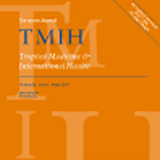
Abstract
Objective
To identify factors associated with delivery outside a health facility in rural Malawi.
Method
A cross-sectional survey was conducted in Balaka, Dedza, Mchinji and Ntcheu districts in Malawi in 2013 among women who had completed a pregnancy 12 months prior to the day of the survey. Multilevel logistic regression was used to assess factors associated with delivery outside a facility.
Results
Of the 1812 study respondents, 9% (n = 159) reported to have delivered outside a facility. Unmarried women were significantly more likely [OR = 1.88; 95% CI (1.086–3.173)] to deliver outside a facility, while women from households with higher socio-economic status [third-quartile OR = 0.51; 95% CI (0.28–0.95) and fourth-quartile OR = 0.48; 95% CI (0.29–0.79)] and in urban areas [OR = 0.39; 95%-CI (0.23–0.67)] were significantly less likely to deliver outside a facility. Women without formal education [OR 1.43; 95% CI (0.96–2.14)] and multigravidae [OR = 1.14; 95% CI (0.98–1.73)] were more likely to deliver outside a health facility at 10% level of significance.
Conclusion
About 9% of women deliver outside a facility. Policies to encourage facility delivery should not only focus on health systems but also be multisectoral to address women’s vulnerability and inequality. Facility-based delivery can contribute to curbing the high maternal illness burden if authorities provide incentives to those not delivering at the facility without losing existing users.